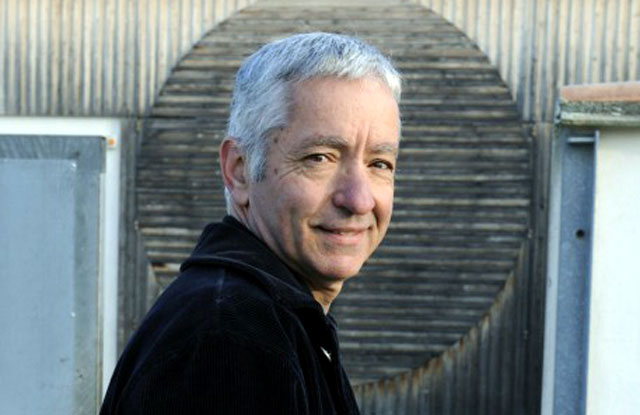The following text is reproduced with the kind permission of Jancis Robinson M.W. Links will redirect you to her excellent website www.jancisrobinson.com and we would encourage our customers to subscribe in order to take avdvantage of her "Purple Pages" which provide fascinating reading:
In the first half of the twentieth century Pomerol may have been regarded as an appellation as obscure as, say, Graves de Vayres is today, but things have changed somewhat. The wine merchants J P Moueix, Harry Waugh, Ronald Avery and the resulting ascent of Petrus saw to that.
Today, time and again in horizontal tastings of bordeaux vintages, Pomerol continues to show its enormous strength, reliably delivering accessible pleasure when its right bank neighbour St-Émilion is so much more variable and is, in many over-manipulated cases, downright disappointing. The greater variability of St-Émilion is perhaps not so surprising considering how much bigger it is than Pomerol. And indeed it's the relatively limited size of Pomerol that helps to keep prices so high.
What a joy then to see great value in the next-door appellation of Lalande-de-Pomerol. For example, Hubert de Boüard of Angélus has been delivering ambitious examples under his La Fleur de Boüard label throughout this century. Ch Siaurac has been making increasingly exciting wine (and now has a connection with first growth Ch Latour, through the Pomerol estate Ch La Vray Croix de Gay that is under the same ownership as Siaurac, in both of which François Pinault has taken a stake). Ch La Mission 2006 was a star buy recently from Majestic in the UK when priced at only £19.99 for a fully mature wine (now all sold unfortunately).
Someone who has consistently delivered value from Lalande-de-Pomerol, effectively a northern extension of the world-famous plateau of Pomerol, is Denis Durantou of Église-Clinet, an over-performer in Pomerol proper. Within sight of his base in Pomerol (coloured green below) are the Cruzelles vines (coloured yellow) in Lalande-de-Pomerol, just a kilometre as the crow flies from Église-Clinet. Les Cruzelles is a substantial 10-hectare (25-acre) plot of clay-gravel soils, virtually identical to those on the Pomerol plateau.
The Cruzelles vineyard is planted with 88% Merlot, and 12% Cabernet Franc taken from the Église-Clinet vineyard, and produces both a wine called Les Cruzelles and an earlier drinking one called La Chenade. La Chenade is produced from the same vines each year, in the south west of the Cruzelles vineyard where there is more gravel and less clay. Chenade, made up of 80% Merlot and 20% Cabernet Franc in 2014, sees a little less new oak than Cruzelles – about 30% in 2014 – but is made with the same care. In 2014 the Merlot was picked between 24 and 29 September and the Cabernet Franc on 6 October. Purple Pagers may like to revisit this overview of 2014 Pomerol, Lalande de Pomerol and Fronsac.

Denis Durantou
|
Denis Durantou is particularly proud of all the care he has lavished on this carefully drained vineyard, which is on land he regards as thoroughly Pomerolian. Vine density is a relatively high 8,000 vines per hectare, chosen to provide what he regards as the ideal balance between quality and quantity. The vines, grafted on to 3309C rootstock, suitable for relatively damp climates, are carefully trellised and oriented exactly north-south to optimise the exposure of the grape bunches, protecting them from excessive sunburn (something that is becoming increasingly necessary). The wines are made, in specially-sized vats, in the new custom-designed winery shown in the picture above.
As reported in Bordeaux 2014 – retasted in London on Monday, I recently had the chance to re-taste a wide range of 2014s, including Cruzilles and Chenade, the very impressive Église-Clinet 2014 itself, as well as the 2014 from Denis Durantou's Castillon Côtes de Bordeaux, Montlandrie. Les Cruzelles was still a bit young but I was particularly taken by how well La Chenade is already showing. For what they are worth, my scores are inching up. When I tasted La Chenade 2014 en primeur I gave it 16+ but I gave it 16.5 at Justerini's tasting in London this month and thought it would provide charming drinking from next year until about 2023. There was that characteristic sweet gaminess on the nose that you find so often in evolved Pomerols and a bit of freshness (2014's hallmark) too.
You could probably enjoy it already with the right chewy food but there may not be that much hurry to drink it. Denis Durantou told me this week that Olivier Gautrat, the maître de chai at Église-Clinet, had given him a taste of La Chenade 2005 the week before and he was so impressed by how delicious it was, he regretted having sold it all.
La Chenade 2014 is widely available. Fine-wine traders Farr Vintners, who are offering the 2014 at £110 a dozen in bond, report that La Chenade has regularly been their best seller. They also claim that only 1,500 cases of the wine are made, but it seems to be extremely well distributed. It's available in France, Italy, Germany, Austria, Belgium, Hong Kong, New Zealand, Canada, the US and from about a dozen fine-wine merchants in the UK, all of whom offer it by the case of six or a dozen, typically in bond.